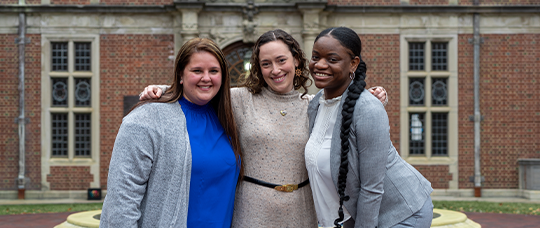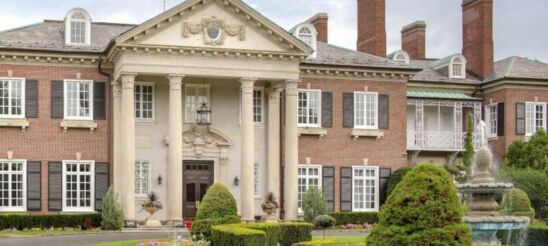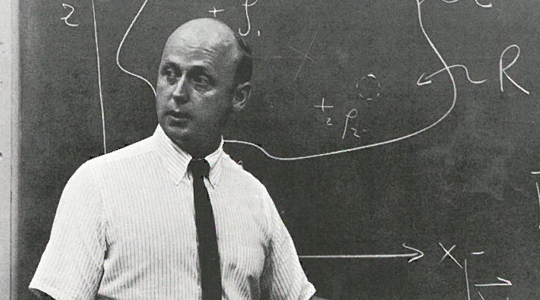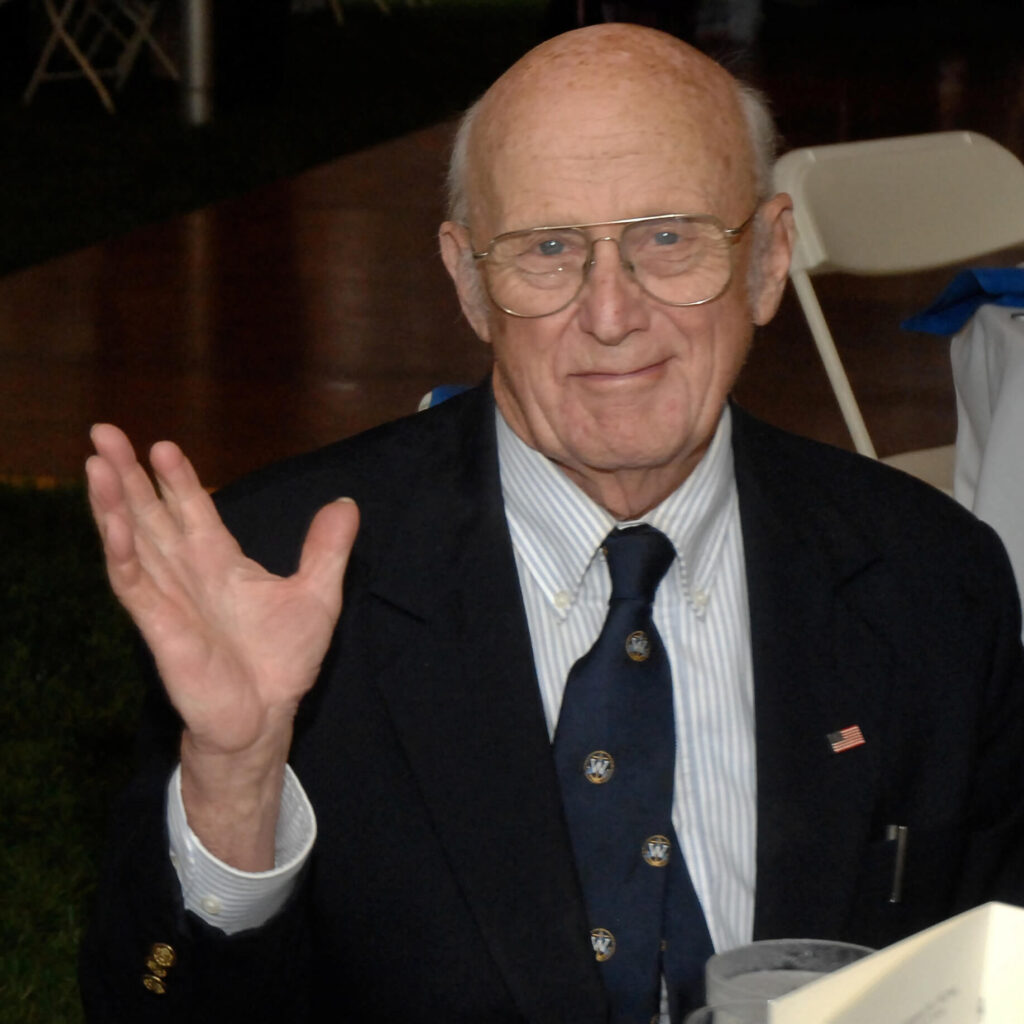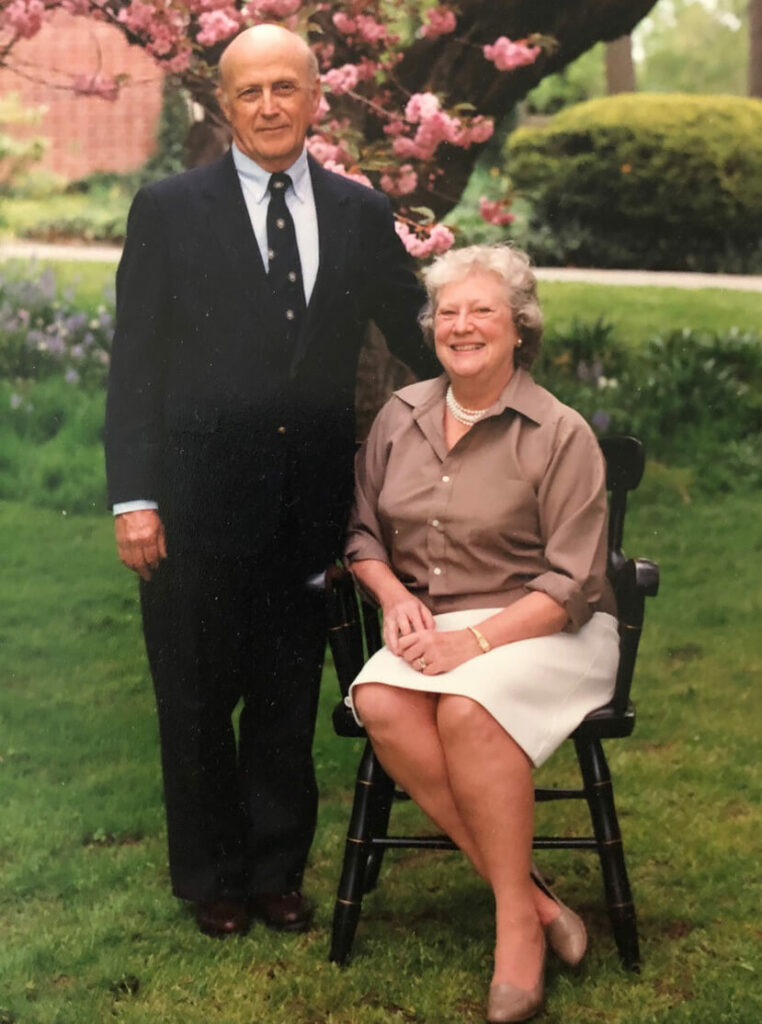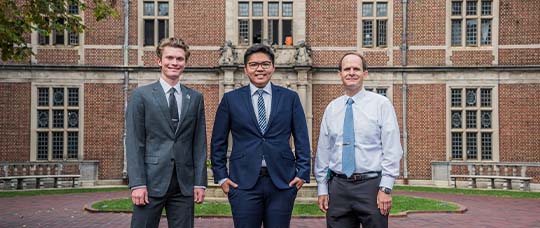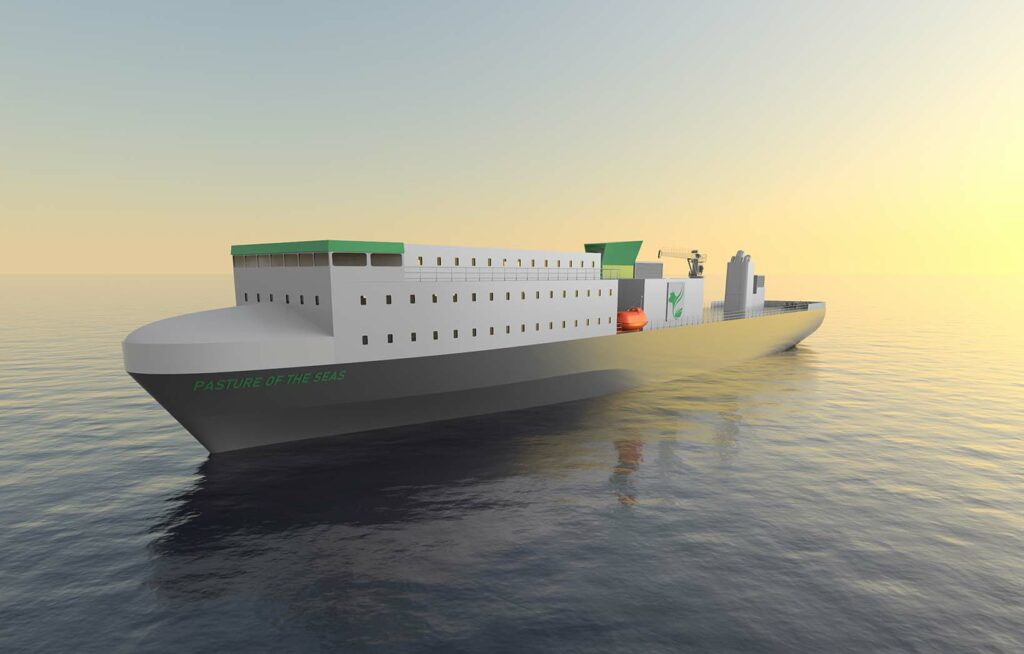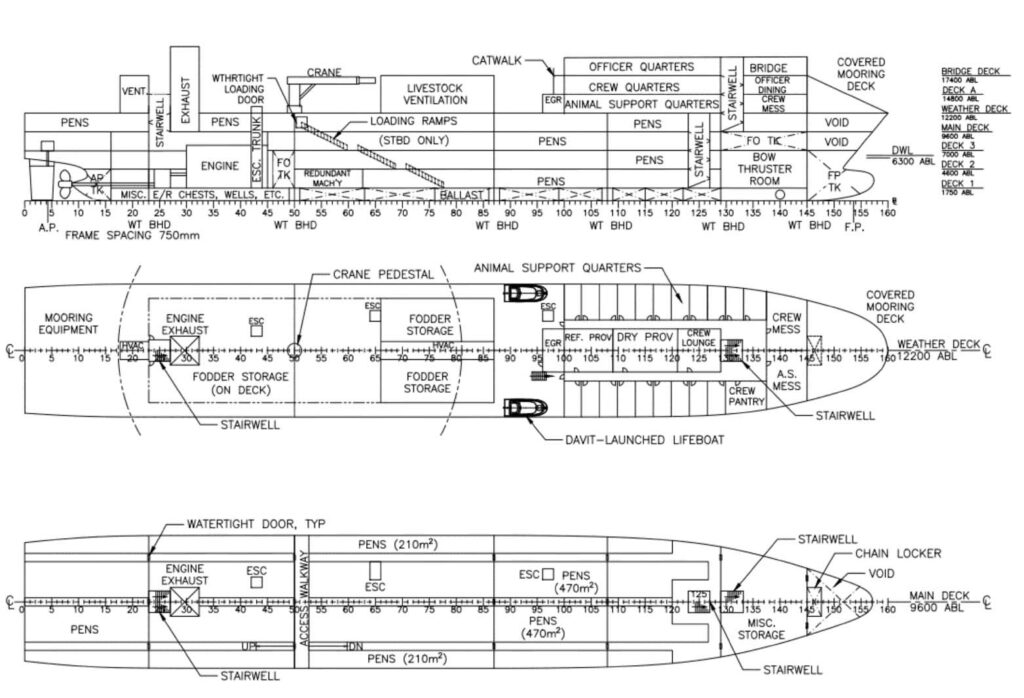Webb Announces New Hires
Please join us in welcoming Alyssa Caliguri and Kayla Green to the Webb Admissions Department!
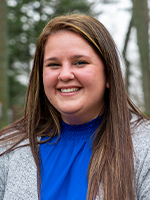
Alyssa Caliguri – Assistant Director of Admissions and Student Affairs
Alyssa brings with her nine years of student affairs experience from her tenure at Western New England University, where she received her Bachelor of Arts Degree in Psychology. She also received her Master of Education in Student Personnel Administration while working full time. Her experiences lie in new student programming, student success, leadership development, and event planning.
Alyssa has held multiple roles during her time at WNE from the Coordinator of Sophomore Year Experience to Assistant Director of First Year Student Success and most recently the Associate Director of New Student Programs and Leadership Development. She loves to help assist students in having the best possible collegiate experience and is very excited to begin working with the students at Webb.
Alyssa likes to go to the beach, see musicals in the city, binge watch friends/reality tv, play sports (volleyball/softball/basketball are her strengths) and she likes to root on her favorite teams the Islanders/Mets/& Patriots when not at work.
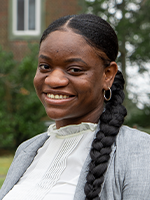
Kayla Green – Assistant Director of Admissions and Student Affairs
Kayla, considers herself a student of life, valuing education both in the classroom and beyond. Graduating with a Bachelor of Science in Human Development and a minor in Africana Studies from Binghamton University. Kayla has achieved a solid foundation in the theories and research defining the field of human development.
Kayla constantly seeks opportunities to contribute to the new approaches of advancing human well-being. For optimal well-being, Kayla encourages engaging in activities that develop a person’s capabilities and potential, build human capital, facilitate employability, and enhance quality of life and the realization of dreams and aspirations. Kayla is passionate about sharing this insight with anyone who is open minded to new ideas.
Throughout her professional career, Kayla has gained a varied skill set, having experience in different sectors including but not limited to, residential life, project management abroad, the aviation sector, and elementary education. Each experience broadens her perspective in a critical exploration of social, cultural, economic, historical and political frameworks and the ways in which individuals, families and communities are situated within them, developing the understanding and skills needed to enhance and promote diversity, equity and social justice.
Using skills and strengths acquired as a student and employee, Kayla continues her pursuit of positively impacting individuals, families, communities, and organizations from a interdisciplinary and global perspective, here at Webb Institute.
Love at Webb
Pictured above, Jenna Ferrieri ’11 and William Markuske ’10 on their Wedding Day.
Love is in the air at Webb! Read our alumni stories about how they met their significant other at Webb!
Caitlin (Andre-Colton) ’05 and Vince Jarecki ’05
Caitlin met Vince during freshman orientation and started to date during Winter Work Term in their sophomore year. They were married in April 2008 in Alexandria, Virginia.
Currently they are still in Alexandria with their daughter Alexa and son Colton. Both U.S. Navy civilians, Caitlin works in shipbuilding program management and Vince is a salvage engineer.
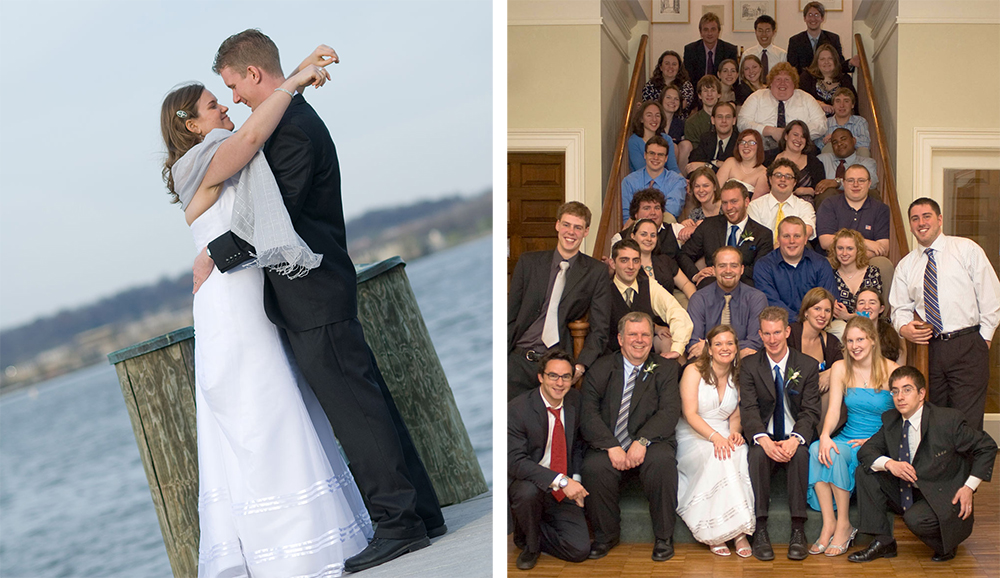
Daniela (Hanson) ’04 and Brendan Abbott ’04
“Brendan and I were in the same class at Webb, and presumably met during orientation… But, I don’t actually remember us talking until a little further into freshman year in the pub! During winter work that year, we ended up in Pascagoula, MS with a large group of classmates and that is when we really got to know each other. We were married in Little Compton, Rhode Island in 2007 and had many of our Webb classmates and professors in attendance.
The rest is history – 20 years together, two beautiful children, two wonderful dogs, three apartments, one house and many vacations have been shared!
We currently live in Portsmouth, Rhode Island with our two children, Bianca (11) and Myles (9). Brendan is Chief Designer at Sparkman & Stephens and Daniela is a Project Manager at Foth Infrastructure & Environment – both with offices in Newport, Rhode Island. We enjoy boating, sailing, and all sorts of water activities as a family!”
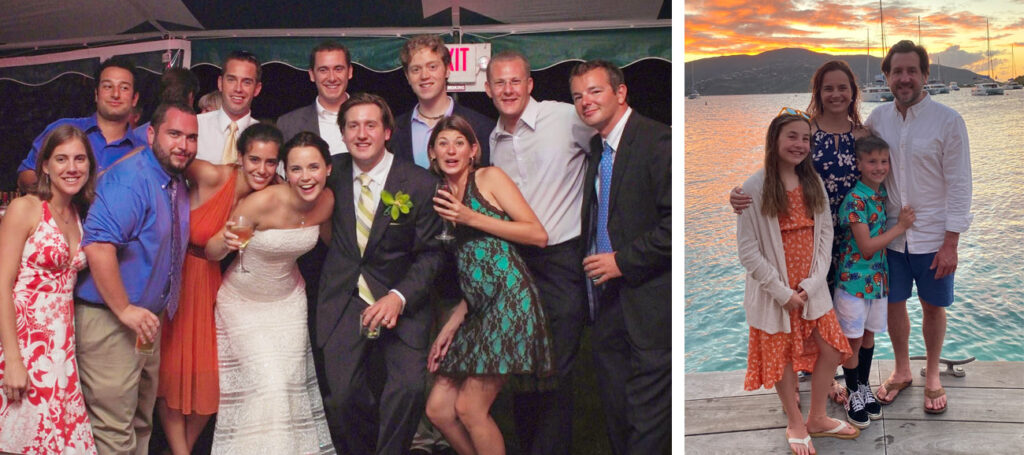
Douglas ’79 and Kathleen (Callahan) ’80 Henn
“We obviously knew each another just being at Webb but didn’t get together until Doug’s senior year when he lived in the Model Tank apartment across the hall from the women’s apartment. We were married at Webb August 9, 1981 and currently living in Lawrenceville NJ with three grown children scattered across the country. I am a public school science and math supervisor while Doug works in atmospheric modelling.”
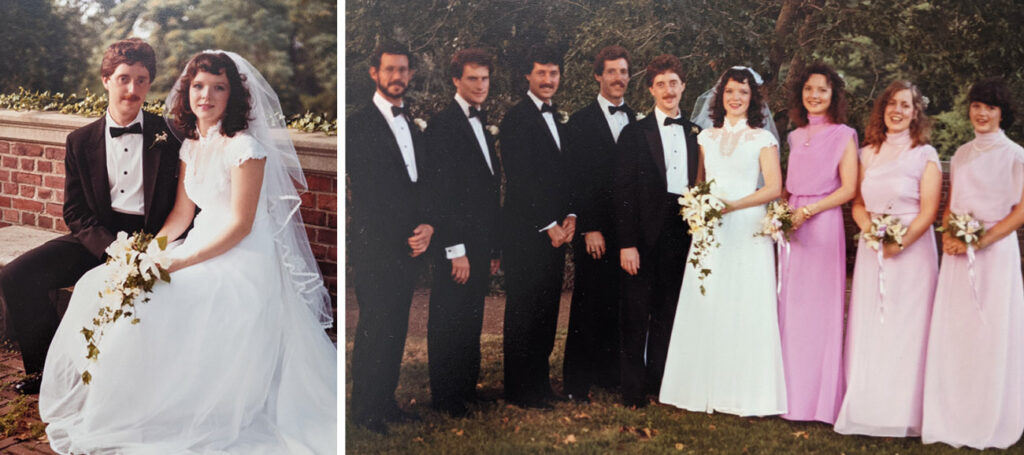
Ron ’63 and June (Hon.) Kiss
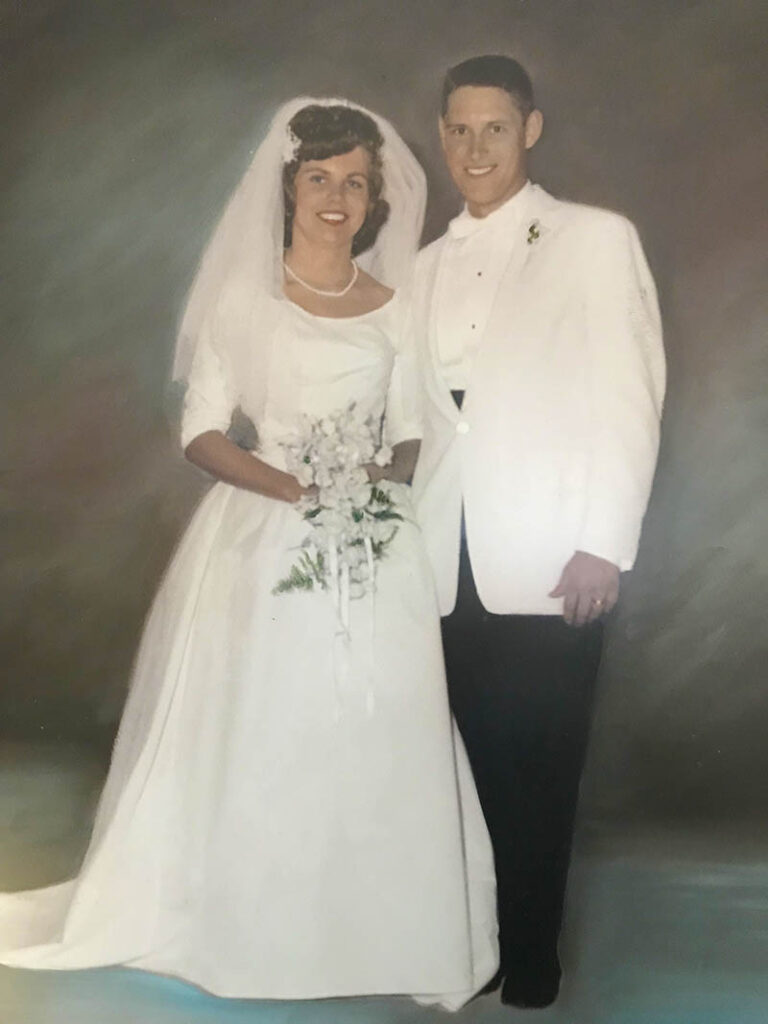
“Even though we began dating in high school, we were together since day one on Webb’s campus beginning in August 1959.
We were married in our hometown of Union, New Jersey, the day after Webb graduation June 29, 1963.”
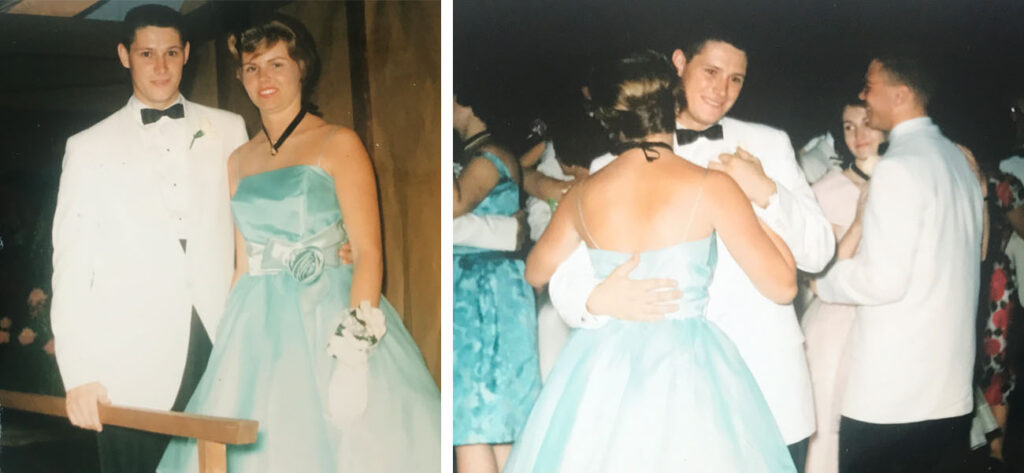
Erin Hub ’16 and Jonathan Roussin ’17
“We met at Webb. I was a junior and he was a sophomore. We were in Jazz band together and would go running together. We are currently living in Groton, Connecticut. Jon works at Electric Boat and I work at APS. We both work in hydrodynamic departments. We have a cat named Digit.”
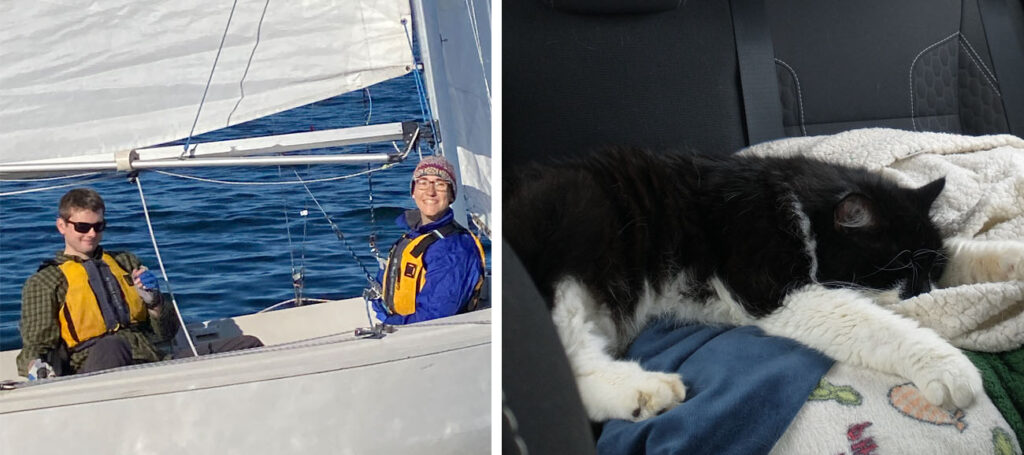
Kathleen (Cain) ’07 and Stephen ’08 Minnich
“Stephen and I met at Webb, but reconnected when Steve moved to DC to work for NAVSEA after graduate school. We were married on October 5, 2014 at Mount Snow in Vermont. Every member of the classes of 2007 and 2008 were invited; and four members of our bridal party were also Webbies.
We both work for NAVSEA in the DC area and live in Alexandria, Virginia, with our two boys David (5) and John (2).
Webb and the relationships we formed there shaped our lives for the better!”
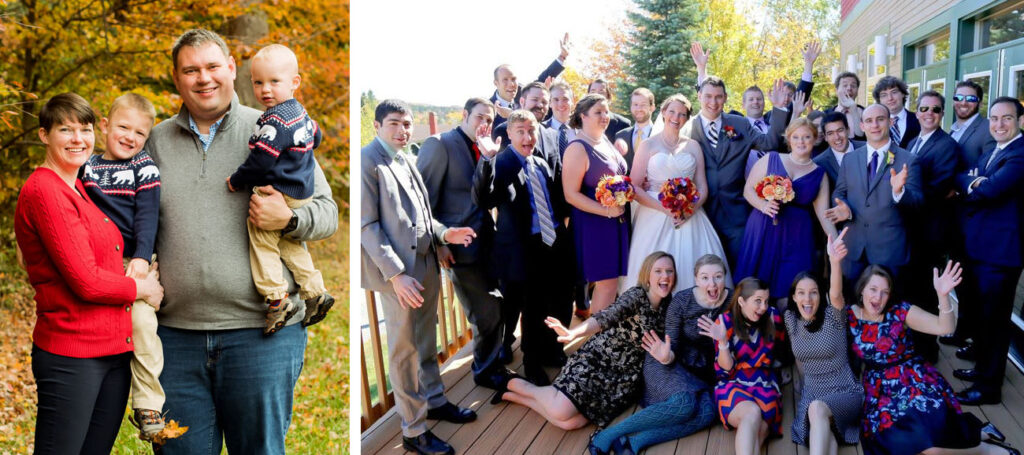
Kierstin (Del Valle) ’13 and Andy ’11 Lachtman
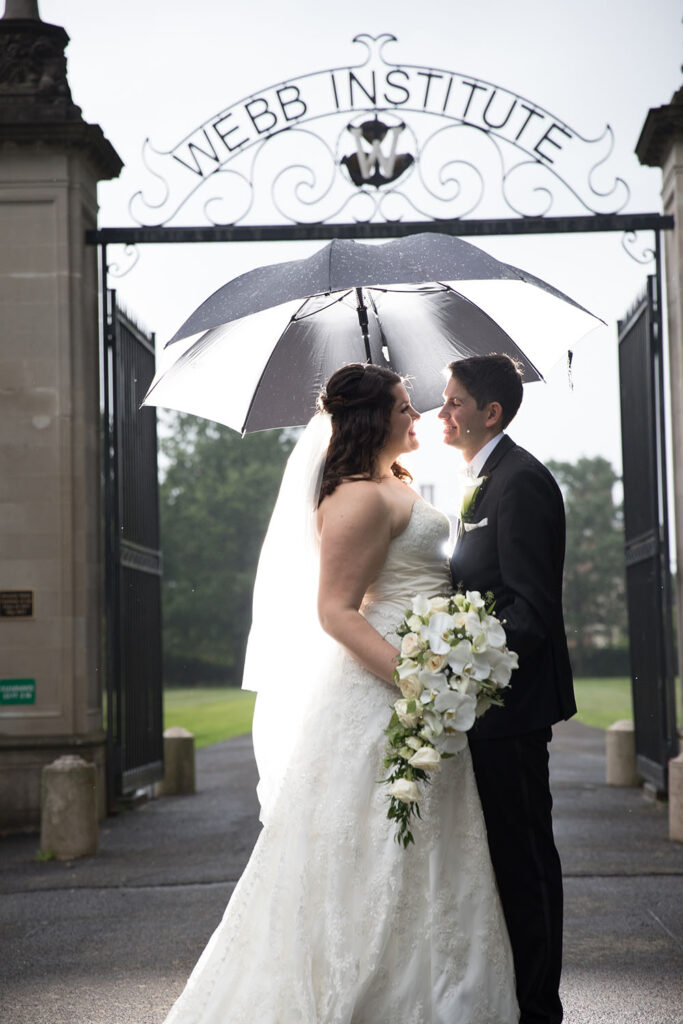
“We met while students at Webb and were married in Glen Cove, New York at St. Patrick’s Church in August 2018. The reception was held at Glen Cove Mansion. We live in the Washington D.C. area. I work for the Liberian Shipowners’ Council and Andy works for the United States Coast Guard.”
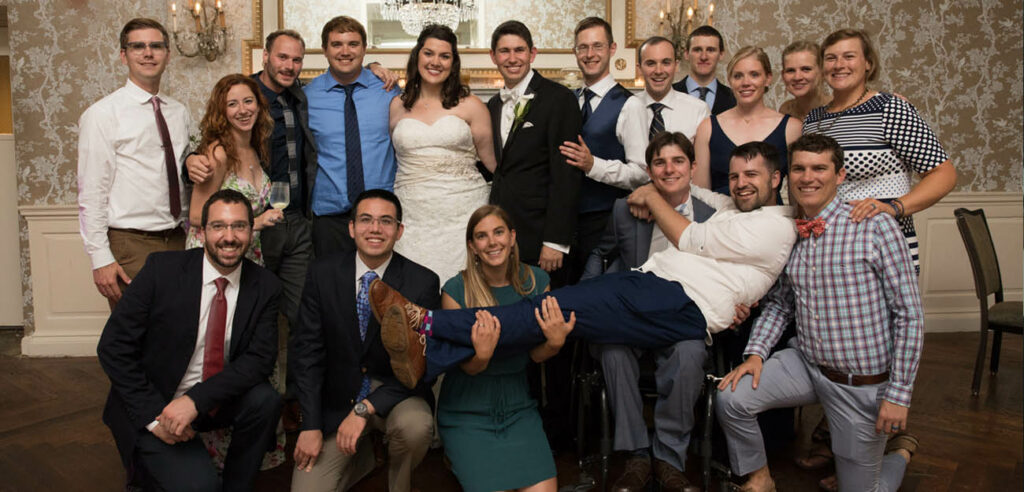
Lidia (Mouravieff) ’11 and Schuyler ’12 Needham
They met at Webb Institute’s 2008 Orientation Week. Lidia was Schuyler’s orientation leader, and she actually wrote him a letter the summer before to introduce herself and to welcome him to Webb. It could be that they actually met when Schuyler visited Webb as a prospective freshman. Schuyler apparently sat at Lidia’s desk chatting with her classmates during his visit!
The were married 5 October 2014 at Novo Diveevo Russian Orthodox Convent in Nanuet, New York, followed by a reception is the New York Country Club.
Schuyler and Lidia are living on Shelter Island in New York, with their two boys Jonah (2 years old) and Kiprian (5 months old). Schuyler is helping run his family’s business, Coecles Harbor Marina & Boatyard.
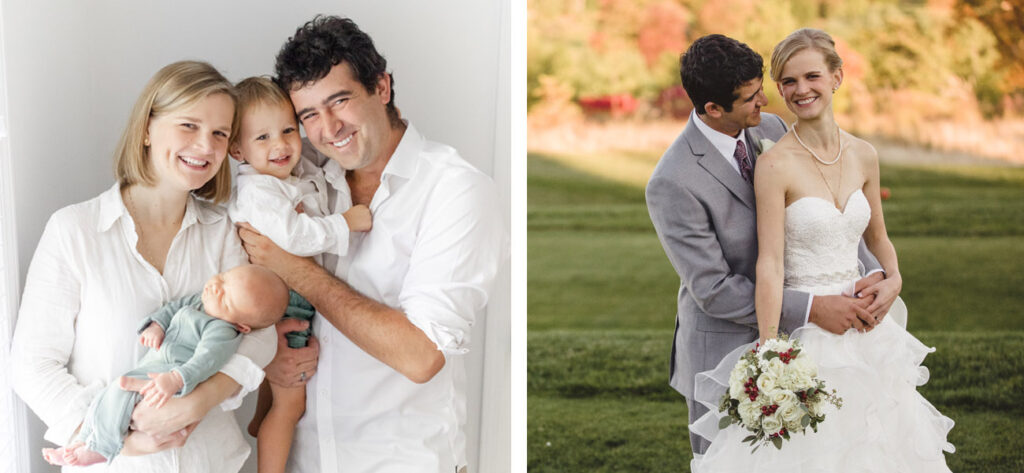
Paul B. ’64 and Joan Mentz
“We attended most of the social events at Webb during my four years from 1960 to1964. Joan became my life partner …62 years and counting. We have special memories of Grace Ward and Ethel Bond…so kind to Joan. I shared all of this with June Kiss and Bridget Lisnyk Washlack (both 1963H).
As Webb AD in 1962…Joan kept the clock during Varsity basketball home game. The referees were very concerned…”a girl was keeping the clock,” but she did great.
We were married on September 1965 in Queens, New York. We are currently retired with three children and seven grandchildren.
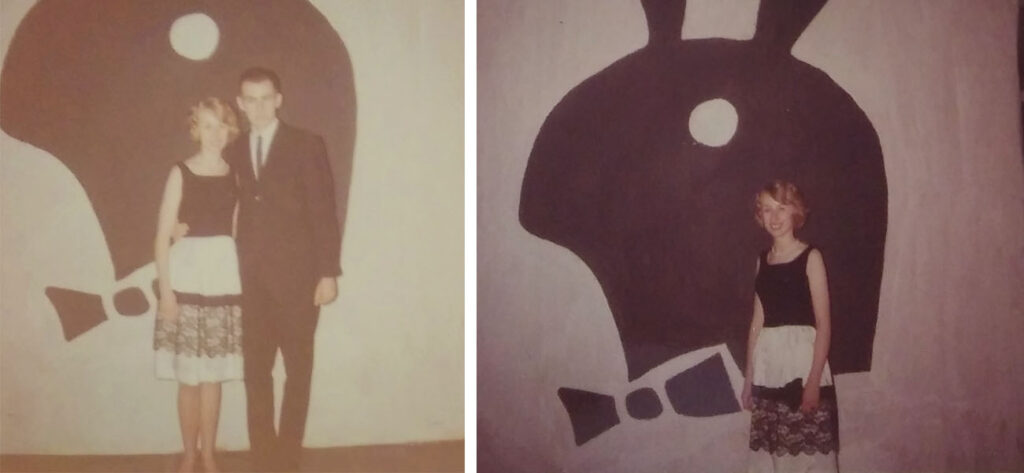
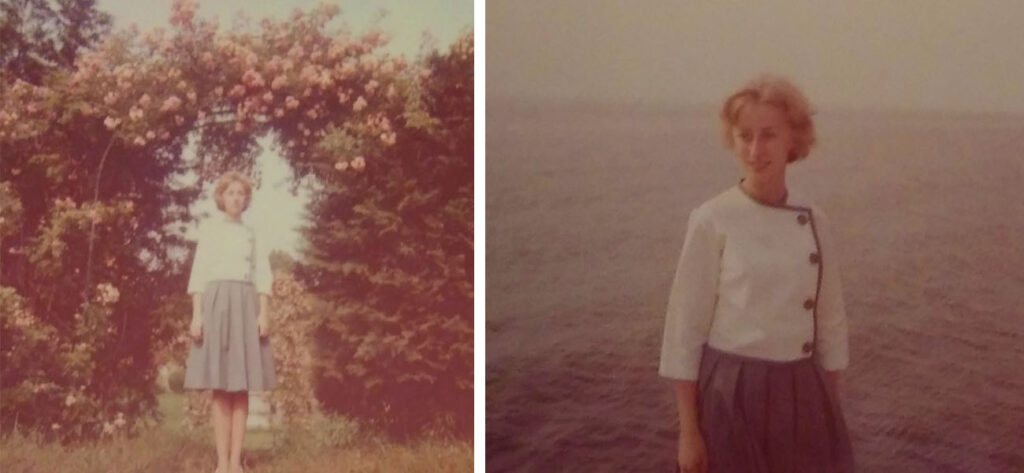
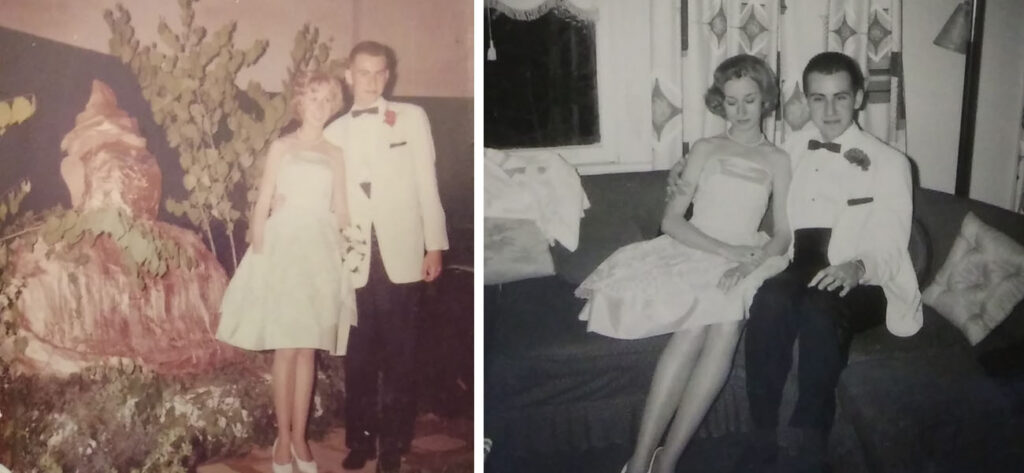
Changes in Glen Cove Mansion Accommodations
Plan your next trip to Webb early to ensure your room at the Glen Cove Mansion.
We are excited to welcome everyone back to campus this year. From Homecoming and Class Agent Forum, to Commencement and Family Weekend, we hope there will be an event for you!
To prepare for your upcoming trip to Webb, we wanted to share that Glen Cove Mansion now requires Webb guests to make reservations as early as possible, since they will release the rooms 45 days prior to the event. Webb guests will receive the discount rate of $220, please call or email the GCM with the specific date and group name (see names below).
Contact information for reservations:
Phone: 646-518-8775 / 646-518-8773
Email: moc.noisnamevocnelg@snoitavresermcg
Upcoming Webb Events and Glen Cove details: (Subject to change due to COVID)
2022 Webb Institute Board Meeting & Heritage Society Room Block
May 20, 2022
50 rooms (Mix of Premium King and Garden Double)
2022 Webb Institute Homecoming/Retirement Room Block
May 21, 2022
20 rooms (Garden Double) almost sold out
2022 Webb Institute Graduation
June 18, 2022
25 Rooms (Mix of Premium King /Double)
2022 Webb Institute Family Weekend
Sep 23-25, 2022
25 Rooms (Garden Double)
Additional Places to Stay: (20 minutes away)
East Norwich Inn (72 rooms)
516-922-1500 or 800-334-4798
6321 Northern Boulevard
East Norwich NY 11732
Mention Webb Institute for their corporate rate.
Comfort Inn Syosset (82 rooms)
516-921-1111 or 800-228-2800
24 Oak Drive at Jericho Turnpike, Syosset
The Inn at Fox Hollow (145 rooms)
800-291-8090
7755 Jericho Turnpike, Woodbury
Holiday Inn Westbury (153 rooms)
516-997-5000 or 800-HOLIDAY
369 Old Country Road, Carle Place
Roslyn Hotel (76 rooms)
516-625-2700 or 800-626-9005
1221 Old Northern Boulevard, Roslyn
If you have any questions about your trip to Webb, please contact Gailmarie Sujecki at ude.bbew@ikcejusg.
In Memoriam: Dr. Lawrence W. Ward PG’51
Photo above: Professor Ward teaching at Webb in 1967
We are sad to report that Professor Larry Ward PG’51 passed away at the age of 96 in Rocky Hill, CT (formerly of Locust Valley, NY) on January 10th, 2022.
Please enjoy a recent article written by Anthony Zic, Webb’s Director of Development, originally published in the 2020-21 Annual Report (p.11). The article captures Professor Ward’s humor and generosity and his legacy, which will inspire future generations of Webbies.
Professor Lawrence W. Ward PG’51: Giving Back to Webb Takes Many Forms
As Professor Ward and I met to discuss this feature article, he shared with me that he had just been thumbing through Edwin L. Dunbaugh’s A Centennial History of Webb Institute of Naval Architecture, reminiscing about the days when he and his late wife Grace hosted Webbies for meals. His smile was all I needed to know about these vivid memories and his family’s love for Webb.
Among his many exceptional attributes, Professor Ward has a remarkable sense of humor. “I created and ran a hockey team called the C+ Team at my skating club. I was sure to get on the team. There was an A and B Team, so that should tell you how good a player I was,” joked Professor Ward.
Professor Ward graduated from University of Michigan with a Bachelor’s degree in Naval Architecture and Marine Engineering in 1948. In 1951, he received a Master’s from Webb in Nautical Engineering while conducting his thesis work under Professor Nevitt. He went on to work for Gibbs & Cox from 1948-51 in the Hull Scientific Division to work on the design of the SS United States, then joined the company’s Hydrofoil Group from 1952-55. In 1958, Professor Ward replaced Professor Bob Jensen to teach Structures and Fluids to both Webb undergraduates and Navy postgraduates, and the Fluids Lab and Flow Channel were later added to his many Webb responsibilities. He would serve as Webb professor for a remarkable 32 years and spent another four years taking care of the Robinson Model Basin (known by many as the Webb Tank).
Professor Ward and his family lived over the Robinson Model Basin for ten years. There were two apartments on the 2nd floor, the other occupied by Captain Robert A. Hinners, USN (Ret.) and his wife. Professor Ward fondly recalls that Webb Beavers helped with various tasks around the apartment and the labs, and as a show of gratitude, the Wards would invite students for meals at the apartment. “They were grateful. It was nice for the students to be a part of a family, our family, and besides, the Webb food was not so great at that time,” recalls Professor Ward.
Professor Ward went on to receive a Doctoral degree from Stevens Institute in 1962, and he conducted his thesis in Experimental Wave Resistance in the Webb Tank. He was then awarded a National Science Foundation fellowship and he and his family spent a year in Hamburg, Germany in 1965, during which time he enjoyed traveling to England, Scotland, and Norway.
In 1974, Professor Ward took the reins from the late Professor Thomas Bond ’45 as the Webb Alumni Fund Chairman. When I asked him why he took on this role, he simply said, “it just had to be done.” I then asked him what kept his record-breaking tenure going, he simply replied “inertia!”
“Larry Ward has been my teacher (at Webb), mentor, cheerleader, and friend for over 50 years. He was my role model as Webb Alumni Fund Chairman—a position he held for 24 years. For Webb graduates entering the workforce, his guidance was “Give a Week for Webb,” and for older alums who could contribute more, he advised “Give until it feels good!” Those two slogans have stood the test of time, and we can thank Larry Ward for putting the Webb Alumni Fund on the growth path that continues through today,” John Malone ’71, Webb Alumni Fund Chairman 1997-2015.
In 1989, Professor Ward received the greatest honor that may be bestowed upon a Webb alumnus, the William Selkirk Owen Award, for outstanding achievement and service to his profession and to Webb. He was a very active member of St. George’s Episcopal Church in New York City, which is how he met his late wife, Grace. Later, he was active at St. John’s of Lattingtown in Locust Valley. Rounding out the Ward family are their three children: John, Chris, and Anne.
The Ward family has been extraordinarily generous to Webb for decades. Professor and Mrs. Ward joined the Heritage Society in 1996 by transferring stock to Webb to establish a Charitable Remainder Annuity Trust. Most recently, Professor Ward established a scholarship fund that provides room and board stipends for Webb students with a demonstrated financial need. When I asked the Professor what prompted him to establish this scholarship fund, he replied, “I guess it still feels good!”
Two Years in a Row – Webb Students win the Dr. James A. Lisnyk Student Ship Design Competition
(Pictured left to right: Calder Hartigan, Minh Tran, Bradley D.M. Golden ’99)
For the second year in a row, Webb students have taken first place in the SNAME Dr. James A. Lisnyk Student Ship Design Competition. Seniors Calder Hartigan and Minh Tran received this honor for their design of a Livestock Carrier, which was prepared as a part of their junior year Ship Design 1 (SD1) course.
The primary purpose of the ship was to export up to 2,000 dairy cattle from the U.S. to overseas customers in Africa, Asia, and the Middle East. These types of vessels have been a controversial subject due to concerns over animal welfare, and the team was determined to design their ship to comply with the industry’s most comprehensive requirements and best practices so as to ensure the wellbeing of the animals being transported. The team consulted a wide variety of subject matter experts, including livestock carrier operators, dairy farmers, and livestock exporters, to make sure they fully understood the impact their decisions would have on the animals being carried.
Notable features of the design included a “closed” type cargo area to protect animals from the elements, ventilation systems to maintain a controlled interior environment, independent fodder silos for food storage, a conveyor-type animal feed system for delivery of food to each pen, and an automatic fresh water distribution system complete with water level monitoring and control devices.
According to the SNAME website, “The Lisnyk Student Ship Design Competition challenges groups of young people to design theoretical but practical cutting-edge vessels. Open to the world’s colleges and universities supporting maritime careers, the program has fostered teamwork and learning through competition.”
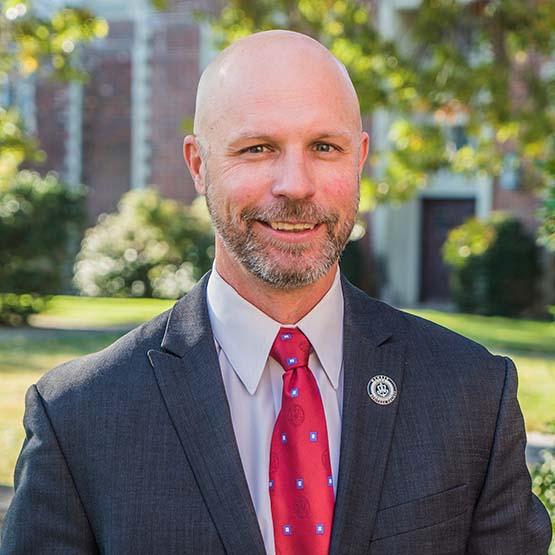
“Congratulations to the team, Professor Golden, and the industry advisors. The design and its presentation were very well done and quite worthy of the honor. It is always rewarding when outside groups recognize the excellent work of our talented Webb students and faculty. I hope that members of this year’s junior class see this as inspiration to enter their SD1 designs in one of the various design competitions available.” – Dean Werner
It is an honor for Webb to receive this award as, Dr. Linsnyk was a Webb graduate from the class of 1963.
About Dr. James Lisnyk ’63 (Portions from A Centennial History of Webb Institute of Naval Architecture)
Born in Jamaica, New York Dr. Lisnyk was a graduate of Webb Institute of Naval Architecture. Attended MIT as SNAME Scholar receiving a MS in Naval Architecture in 1964 and joined BuShips. He earned a D.Sc. degree in Engineering Management from George Washington University in 1977. Then transferred to MARAD as Program Manager for Advanced Ship Systems then becoming Acting Director, Office of Maritime Technology in MARAD’s Office of Research and Development. Authored numerous technical papers for ASNE and SNAME; served on SNAME and ASNE governing boards; was Chairman of SNAME’s Chesapeake Section and VP of that Society. Elected VP of the Webb Alumni Association. Returned to NAVSEA in 1980, as Chief Naval Architect and Deputy Director, Hull Division. Awards include, the Department of Commerce Bronze Medal and SNAME Spring Meeting Paper Award 1979. Dr. Lisnyk was honored posthumously by having an ASME scholarship named in his memory; the Chesapeake Sect. Established the James A. Linsyk Student Design Competition Award; and NAVSEA’s Association of Senior Engineer’s named its award for its outstanding young engineer after him. Married Bridget DiGesu in 1964; two children Linda and Amy.
Tragically, he and his daughter were killed on August 1st, 1984 in an automobile accident. Dr. Lisnyk’s wife Bridget and another daughter were injured in the accident but survived.
About the Junior Class Small Vessel Design Project (SD1)
As a part of Professor Bradley D.M. Golden’s ’99 Ship Design 1 (SD1) class, the juniors spent the first two-and-a-half months of the spring semester preparing their first complete concept designs.
Using the knowledge they’ve gained in their nearly three years studying at Webb and the experiences from their winter work periods to date, this was the students’ first opportunity to apply the naval architecture and marine engineering principles they’ve studied including stability, ship’s structures, main machinery systems, auxiliary systems, resistance and propulsion, and electrical engineering.
Working in small groups of three and four, the students selected one of the vessel types and took their first couple of spins around the design spiral to prepare vessel concept designs. To help make the project as realistic as possible, members of industry familiar with each of the vessel types helped prepare the statements of design requirements that each of the designs had to meet. To challenge the students even further, one or two “curveballs” were thrown into each design statement to make the students think long and hard about how they would achieve their objectives.
At the end of the spring semester, the students presented their final designs to their fellow students, faculty, and members of industry who served as part of an evaluation team. After three years at Webb, the Junior class can now say with confidence that they’re familiar with the design process and are well on their way to joining the fields of naval architecture and marine engineering.
About SNAME:
The Society of Naval Architects and Marine Engineers (SNAME) was organized in 1893, to advance the art, science, and practice of naval architecture, shipbuilding and marine engineering. SNAME is an internationally recognized non-profit, professional society of individual members serving the maritime and offshore industries and their suppliers. For many, SNAME has been absolutely essential to career development and success in the industry. With more than 6,000 members around the world in 95 countries, SNAME is THE International Community for Maritime and Ocean Professionals! For more information, please visit: https://www.sname.org/

